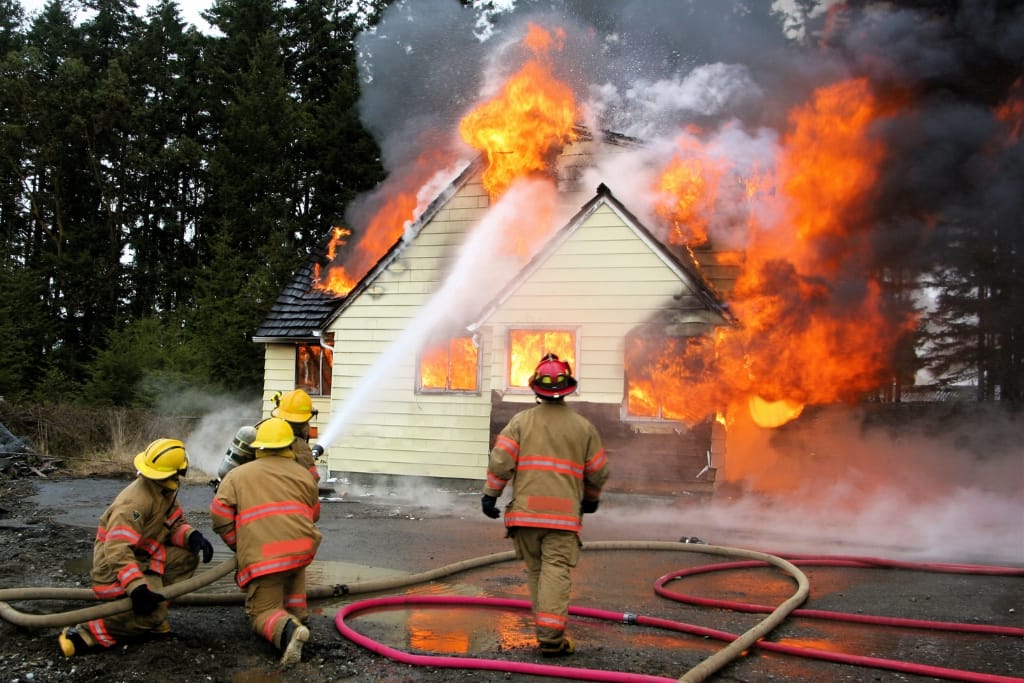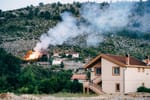As wildfires continue to pose a serious threat to communities across the globe, homeowners must take proactive steps to protect their property and loved ones.
This guide aims to provide valuable insights into understanding and mitigating the risks associated with wildfires.
By assessing your property's vulnerabilities, creating a fire-resistant landscape, and preparing your home for potential threats, you can significantly reduce the likelihood of fire damage.
With a strategic approach and dedicated efforts, you can create a safer environment for your family and contribute to the overall resilience of your community in the face of increasing wildfire occurrences.
The threat of wildfires has been escalating in recent years, driven by a combination of climate change, urban development, and extreme weather conditions.
Rising temperatures and prolonged droughts create conducive environments for wildfires to ignite and spread at alarming speeds.
In addition, the expansion of human settlements into previously untouched wilderness areas increases the likelihood of fire encounters, placing both properties and lives at risk.
As forest management practices have evolved, there are growing concerns about fuel accumulation in overgrown areas, which can exacerbate the severity of wildfires.
With these factors at play, understanding the increasing threat of wildfires is crucial for homeowners seeking to safeguard their homes and communities from devastating impacts.
Taking preventative measures against wildfires is essential for minimizing risk and ensuring the safety of homes and families.
By implementing proactive strategies, homeowners can significantly decrease the likelihood of fire damage and enhance the resilience of their properties.
Preventative actions, such as assessing vulnerabilities, creating defensible spaces, and making fire-resistant upgrades, not only protect individual homes but also contribute to community-wide safety efforts.
Being prepared can lead to quicker evacuation during emergencies, reducing stress and improving response time.
Ultimately, a commitment to prevention fosters a sense of security and preparedness, empowering homeowners to act decisively in the face of wildfire threats.
This guide will provide a comprehensive framework for homeowners looking to protect their properties from wildfires.
It will begin with an assessment of your property's vulnerabilities, allowing you to identify potential risks and areas needing attention.
Following this evaluation, the guide will delve into creating a fire-resistant landscape, focusing on landscaping practices that mitigate fire spread and enhance safety.
Lastly, it will outline practical steps to prepare your home, including necessary upgrades, emergency planning, and ongoing maintenance.
Each section will offer detailed sub-steps and actionable advice aimed at empowering homeowners to take control of their safety in the face of increasing wildfire threats.
Step 1: Assess Your Property's Vulnerability
Understanding your property's vulnerability to wildfires is the crucial first step in implementing effective safety measures.
By thoroughly assessing both the immediate surroundings and the structural characteristics of your home, you can pinpoint specific risks that may increase exposure to fire.
This evaluation not only highlights areas that need improvement, such as vegetation management or structural upgrades but also informs the broader strategies you will employ to safeguard your property.
Awareness of vulnerabilities enables homeowners to take informed action, thus laying the groundwork for a comprehensive wildfire protection plan.
Evaluate The Surrounding Vegetation And Landscaping
Identify Flammable Plants And Trees
Identifying flammable plants and trees is essential to mitigating wildfire risks in your landscape.
Certain species, such as junipers, pines, and other resinous plants, are known to ignite easily and can serve as conduits for fires to spread closer to your home.
It's important to evaluate your garden and yard for these types of vegetation and consider replacing them with more fire-resistant options, such as deciduous trees and non-resinous shrubs.
Maintaining a defensible space around your home by removing dead or dying vegetation and keeping plants well-watered can help reduce fire hazards significantly.
By being mindful of the plants in your landscape, you can create a safer environment that minimizes the risk of fire exposure.
Assess The Distance Between Your Home And Potential Fuel Sources
Assessing the distance between your home and potential fuel sources is a critical component in wildfire risk mitigation.
Fire sources, such as dry vegetation, wood piles, and flammable outdoor furniture, can quickly ignite and pose a serious threat to your property.
Ideally, there should be a defensible zone of at least 30 feet from your home to any vegetation or combustible materials.
This space should be cleared of any debris and well-maintained to reduce fire hazards. Landscaping features such as stone pathways or gravel can serve as firebreaks, further limiting the risk of flames reaching your home.
By carefully evaluating and managing the proximity of fuel sources, homeowners can significantly enhance their safety and protect their properties against wildfires.
Examine Home Materials And Construction
Check The Roofing And Siding Materials For Fire Resistance
Checking the roofing and siding materials for fire resistance is a vital step in fortifying your home against wildfires.
Roofs made from non-combustible materials, such as metal, tile, or asphalt shingles rated for fire resistance, are crucial in preventing the ignition of flames during a wildfire.
The siding of your home should ideally consist of fire-resistant materials like stucco, brick, or fiber cement, as these can help withstand high temperatures and reduce the chance of fire spreading.
It’s also important to regularly inspect these materials for any damage or wear, as compromised elements can increase vulnerability.
By ensuring that your home is constructed with fire-resistant roofing and siding, you enhance its ability to withstand wildfires and protect your family and belongings.
Inspect Windows And Doors For Seals And Proper Installation
Inspecting windows and doors for seals and proper installation is essential in ensuring your home’s resistance to wildfires.
Gaps, cracks, or improperly sealed frames can allow embers and flames to infiltrate your living space, posing a significant risk during a wildfire event.
Homeowners should check that all windows and doors are equipped with tight-fitting seals, and consider upgrading to tempered glass or dual-pane windows, which offer enhanced protection against heat.
Verifying that doors have solid, fire-rated materials can help to mitigate the spread of fire from the outside.
By maintaining and upgrading the integrity of windows and doors, you create an important barrier that enhances your home’s overall fire safety.
Analyze The Location Of Utilities And Hazards
Review The Placement Of Propane Tanks And Power Lines
Reviewing the placement of propane tanks and power lines is critical for minimizing fire risk in wildfire-prone areas.
Propane tanks should be located at least 30 feet away from structures and any vegetation, as they can become explosive when exposed to high heat.
Homeowners should ensure that these tanks are in well-ventilated areas and that the surrounding space is kept clear of combustible materials.
Power lines can pose a threat when tree branches or other flammable vegetation come into contact with them, potentially leading to sparks or downed lines during a wildfire.
Regularly inspecting the distance between utility lines and trees, and trimming back any encroaching vegetation, can help mitigate these risks.
By carefully assessing and managing the placement of propane tanks and power lines, homeowners can significantly enhance their safety in the event of a wildfire.
Identify Nearby Structures That Could Pose A Fire Risk
Identifying nearby structures that could pose a fire risk is a crucial aspect of wildfire preparedness.
Properties with flammable building materials, such as wooden fences, decks, or shake roofs, can easily ignite and serve as a pathway for fire to spread to your home.
Structures that are close to your property, such as sheds, barns, or even neighboring homes, should be evaluated for their fire safety features.
It’s important to consider the fire resistance of both your home and any adjacent buildings, and if necessary, discuss fire mitigation strategies with your neighbors.
By being aware of nearby fire hazards and taking preventive measures, homeowners can create a more secure environment that reduces the risk of wildfire damage.
Step 2: Create a Fire-Resistant Landscape
Creating a fire-resistant landscape is an essential step in safeguarding your home from the threats posed by wildfires.
This process involves strategic planning and thoughtful landscaping choices that can significantly reduce fire risks while enhancing your property’s overall aesthetic appeal.
By selecting fire-resistant plants, designing defensible spaces, and incorporating features such as hardscaping, homeowners can create barriers that slow the spread of fire and protect their homes.
Maintaining the landscape through regular upkeep further reinforces these safety measures, ensuring a resilient environment that not only stays beautiful but also serves as a strong defense against wildfires.
Implement Defensible Space Principles
Clear Flammable Debris From Around The Home
Clearing flammable debris from around the home is a vital practice in establishing a defensible space that helps protect against wildfires.
This involves removing dry leaves, branches, and other combustible materials from your yard, especially within a 30-foot radius of the home.
Homeowners should also consider relocating any firewood piles, propane tanks, and outdoor furniture made from flammable materials to safer areas further away from the structure.
Keeping gutters, roofs, and eaves clear of debris ensures that they do not become ignition points during a wildfire.
By regularly maintaining and clearing the surrounding landscape, homeowners can significantly reduce the risk of fire spreading to their property, enhancing their overall safety in wildfire-prone regions.
Shortlist Of Tools Used To Create Defensible Space:
- Lawn Mower: To maintain short grass and reduce flammable vegetation.
- Brush Cutter: Effective for clearing dense brush and heavy vegetation around the property.
- Chainsaw: Useful for trimming trees and removing any dead or overhanging branches.
- Rake and Leaf Blower: For clearing leaves, debris, and any combustible materials from the landscape.
- Garden Hose with Nozzle: Important for watering defensible zones and wetting down areas during high fire risk times.
- Drip Irrigation System: To keep landscaping hydrated, particularly in defensible zones
- Fire Resistant Mulch: To use around landscaping to help slow the spread of fire.
- Property Boundary Markers: To clearly define defensible space zones.
- Pruning Shears: For maintaining shrubs and trees to keep them healthy and fire-resistant.
- Fire Pit and Spark Screen: Safe outdoor options for fire use that minimize fire risk.
- Fire Extinguisher: Essential for quickly addressing any small fires before they escalate.
- Chipper/Shredder: For processing yard waste into mulch, reducing fuel loads around the home.
- Barrier Tools: Such as shovels and hoes, for creating firebreaks around the property.
Maintain A Buffer Zone With Non-Flammable Plants
Maintaining a buffer zone with non-flammable plants is an important strategy in wildfire preparedness that can significantly enhance your home’s safety.
This buffer zone, ideally extending at least five to ten feet from your home's exterior, should incorporate plants that are known for their fire-resistant properties, such as succulents, ornamental grasses, and flowering shrubs with high moisture content.
These plants not only help to create a physical barrier against flames but also reduce the amount of dry vegetation that could ignite during a wildfire.
Selecting low-growing, well-irrigated vegetation can prevent the fire from climbing, making it harder for flames to reach your home.
By thoughtfully designing this buffer zone, homeowners can establish an effective line of defense while contributing to a visually appealing landscape.
Use Fire-Resistant Materials In Landscaping
Choose Rocks, Gravel, And Non-Combustible Materials
Choosing rocks, gravel, and non-combustible materials for landscaping is a fundamental practice for creating a fire-resistant environment around your home.
These materials serve as effective barriers that do not ignite and can help slow the spread of flames, thereby protecting your property.
Incorporating large rocks, gravel pathways, and decorative stone features in your landscaping design not only enhances its aesthetic appeal but also contributes to fire safety by eliminating highly flammable vegetation within proximity to your home.
Using non-flammable materials for hardscaping elements such as patios and retaining walls further reinforces this protective strategy.
By thoughtfully selecting and integrating these materials into your landscape, homeowners can implement a robust defense against wildfires while maintaining an attractive outdoor space.
Install Heat-Resistant Hardscaping Features
Installing heat-resistant hardscaping features is a crucial element in enhancing the fire resilience of your property.
These features, such as patios, pathways, and retaining walls made from materials like concrete, brick, or stone, can effectively withstand high temperatures and help to create a defensible space around your home.
By choosing non-combustible materials for these structures, homeowners can reduce the risk of fire spreading, as they do not ignite easily and can provide a stable barrier against approaching flames.
Furthermore, incorporating heat-resistant features into your landscaping design not only improves safety but also adds to the aesthetic value of your outdoor space.
By strategically placing these hardscaping elements, homeowners can establish a strong defense while ensuring that their landscape remains functional and visually appealing.
Plan For Irrigation And Fire Breaks
Set Up A Watering System To Keep Vegetation Moist
Setting up a watering system to keep vegetation moist is a vital aspect of wildfire mitigation that can greatly enhance the effectiveness of your fire-resistant landscape.
An efficient irrigation system, such as drip irrigation or soaker hoses, ensures that plants receive a consistent supply of water, thereby maintaining their moisture levels and reducing their flammability.
Regularly hydrated plants not only contribute to overall landscape health but also create a barrier against the spread of fire, as moist vegetation is significantly less likely to ignite.
A well-planned watering system can help with water conservation, providing targeted hydration to high-risk areas without over-saturating the entire landscape.
By implementing these measures, homeowners can fortify their defensible space while promoting a lush and vibrant outdoor environment.
Establish Pathways Or Fire Breaks To Limit Fire Spread
Establishing pathways or fire breaks is an essential strategy in limiting the spread of wildfires and enhancing the safety of your property.
These cleared areas, typically devoid of vegetation, create natural barriers that can slow down or redirect advancing flames, providing critical protection to your home and surrounding landscape.
Pathways made from gravel, mulch, or non-combustible materials not only serve as fire breaks but also facilitate easy access to emergency services during a wildfire event.
Strategically placing these breaks between highly flammable areas and your home can effectively reduce the fuel sources available to fire, thereby lowering the risk of ignition.
By integrating pathways and fire breaks into your landscaping plan, you can establish a proactive approach to wildfire risk management while ensuring a clear and navigable outdoor space.
Step 3: Prepare Your Home For Wildfire
Preparing your home for wildfire is a critical step in ensuring the safety and resilience of your property in the face of increasing wildfire threats.
This phase involves a comprehensive evaluation and enhancement of both the structure of your home and its surrounding environment to create a safer haven.
Key considerations include fortifying the building materials, maintaining clearances around the property, and implementing fire-resistant landscaping practices.
By investing time and resources into preparation, homeowners can significantly increase their chances of protecting their homes from the devastating impacts of wildfires, while also contributing to the overall fire safety of their communities.
Install Fire-Resistant Upgrades
Replace Existing Roofing With Fire-Rated Materials
Replacing existing roofing with fire-rated materials is a vital upgrade that significantly enhances the fire resistance of your home.
Fire-rated roofing materials, such as metal, clay tile, or certain composite products, are specifically designed to withstand high temperatures and resist ignition from airborne embers.
This proactive measure not only protects your home from the immediate threats posed by wildfires but also prolongs the lifespan of your roof by reducing damage from fire exposure.
Furthermore, fire-rated roofs can contribute to better energy efficiency and lower insurance premiums, making them a smart investment for homeowners.
By ensuring that your roofing material meets fire safety standards, you create a crucial layer of defense against potential fires while maintaining the overall aesthetic of your home.
Add Spark Arresters To Chimneys And Stovepipes
Adding spark arresters to chimneys and stovepipes is an essential measure for preventing the risk of fire spreading from your home during wildfire seasons.
Spark arresters serve as a protective barrier that captures and deflects any embers or sparks released from the chimney, preventing them from igniting nearby vegetation or structures.
These devices are typically made of metal mesh or screens designed to withstand high temperatures while allowing smoke to escape efficiently.
By installing spark arresters, homeowners ensure a safer environment and comply with local fire codes, which often require such protections in wildfire-prone areas.
This simple yet effective upgrade not only enhances fire safety but also provides peace of mind, knowing that your home is better equipped to withstand potential fire hazards.
Create An Emergency Evacuation Plan
Outline Escape Routes And Communication Methods
Outlining escape routes and communication methods is a crucial component of any emergency evacuation plan, ensuring that all household members are prepared to act swiftly and safely in the event of a wildfire.
Marked escape routes should be established, detailing the safest paths to designated meeting points or safe zones away from potential fire hazards, ideally using multiple exit options to avoid congested areas.
Establishing reliable communication methods, such as group text messages or a designated family meeting place, can facilitate coordination during an emergency.
Regularly reviewing and practicing this plan with all family members helps reinforce their understanding of their roles and enhances overall preparedness.
By prioritizing these strategies, homeowners can significantly increase their chances of safely evacuating while remaining connected during a crisis.
Prepare An Emergency Kit With Essential Supplies
Preparing an emergency kit with essential supplies is a critical step in ensuring readiness for a wildfire evacuation.
This kit should contain vital items that can sustain you and your family during a crisis, including non-perishable food, water, first-aid supplies, flashlights, batteries, and a portable phone charger.
It's also important to include personal documents, such as identification and insurance information, as well as necessary medications and a list of emergency contacts.
To enhance your kit's effectiveness, consider including items tailored to your family’s specific needs, such as baby supplies, pet food, or specialized medical equipment.
Regularly checking and updating your emergency kit ensures that all items are fresh and functional, providing peace of mind and a greater sense of security as you prepare for unforeseen circumstances.
Maintain Regular Inspections And Maintenance
Schedule Yearly Fire Safety Checks On Your Property
Scheduling yearly fire safety checks on your property is an indispensable practice for maintaining a proactive approach to wildfire preparedness.
These inspections allow homeowners to identify potential fire hazards, assess the effectiveness of existing fire prevention measures, and ensure that all safety equipment, such as smoke detectors and fire extinguishers, are functioning properly.
During these annual checks, it is essential to evaluate the condition of the home’s landscaping, roofing, and any fire-resistant upgrades that may require attention.
Working with local fire safety professionals can provide valuable insights and recommendations tailored to your specific property and location.
By committing to regular inspections, homeowners not only enhance their fire safety but also foster a culture of awareness and readiness within their families and communities.
Keep Gutters And Eaves Free Of Debris To Prevent Ignition
Keeping gutters and eaves free of debris is crucial for preventing ignition during wildfire events.
Accumulated leaves, twigs, and other combustible materials can create a fire hazard by serving as fuel for flames, especially if embers from nearby fires are blown onto your roof.
Regular cleaning of gutters and eaves not only minimizes this risk but also promotes proper water drainage, which is essential for maintaining the integrity of your roofing system.
Homeowners should aim to clean these areas at least twice a year, or more frequently in seasons with heavy foliage.
Installing gutter guards can help reduce debris buildup while still allowing rainwater to flow freely.
By ensuring that gutters and eaves are clear, homeowners take a vital step in enhancing their property's fire resilience and protecting it from potential disaster.
Conclusion
The importance of preparation and vigilance cannot be overstated when it comes to protecting your home and loved ones from wildfires.
A proactive approach, encompassing the establishment of emergency plans, regular maintenance of safety measures, and the creation of essential emergency kits, empowers homeowners to act swiftly in the face of danger.
Staying informed about local fire risks and engaging in routine safety checks fosters a culture of awareness and readiness within families and communities.
By prioritizing these strategies, individuals not only enhance their resilience against wildfires but also contribute to broader efforts in safeguarding their environment and ensuring a haven for themselves and others during emergencies.
Encouraging ongoing education about wildfire safety is essential for promoting awareness and preparedness within communities.
Regular workshops, seminars, and informational resources can help individuals stay informed about the latest fire prevention strategies, evacuation procedures, and safety protocols.
Collaboration with local fire departments and emergency management agencies can provide residents with access to expert knowledge and hands-on training.
In addition, leveraging digital platforms, such as social media and community forums, can facilitate the sharing of valuable information and personal experiences related to wildfire safety.
By fostering a culture of continuous learning and engagement, communities can build resilience against wildfires and ensure that everyone is equipped with the knowledge to protect themselves and their loved ones.
Homeowners are urged to take immediate action by implementing the strategies outlined to enhance their wildfire preparedness.
Start by assessing your property for potential fire hazards, and create or update your emergency plan, ensuring that all family members are familiar with it.
Regularly check and maintain your fire safety equipment, while also keeping gutters and eaves clear of debris to reduce ignition risks.
Establish a well-stocked emergency kit tailored to your family's needs and schedule annual fire safety checks to stay informed about your property’s vulnerabilities.
By actively engaging in these practices, homeowners can significantly boost their resilience to wildfires and contribute to the safety and well-being of their communities.
It is not only a responsibility but a vital step in protecting your home and loved ones from the devastating effects of wildfires.
Download Our Free E-book!







